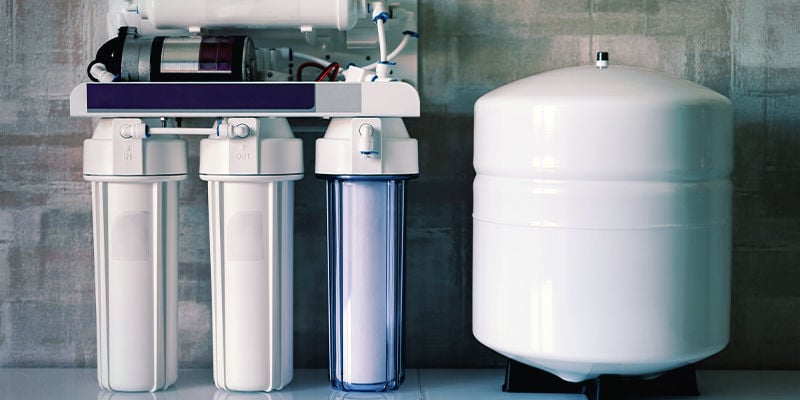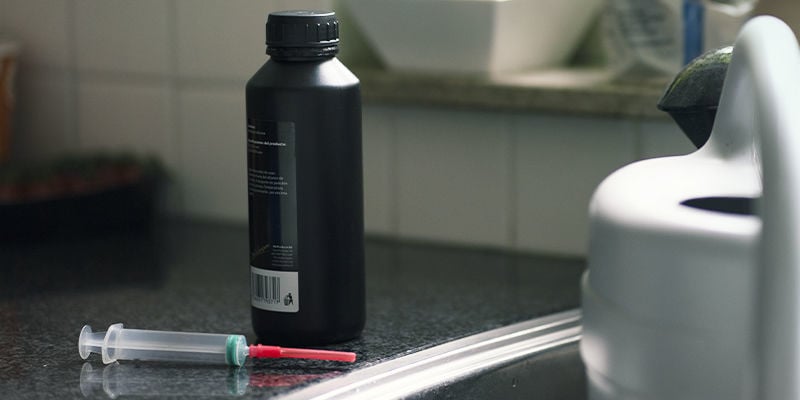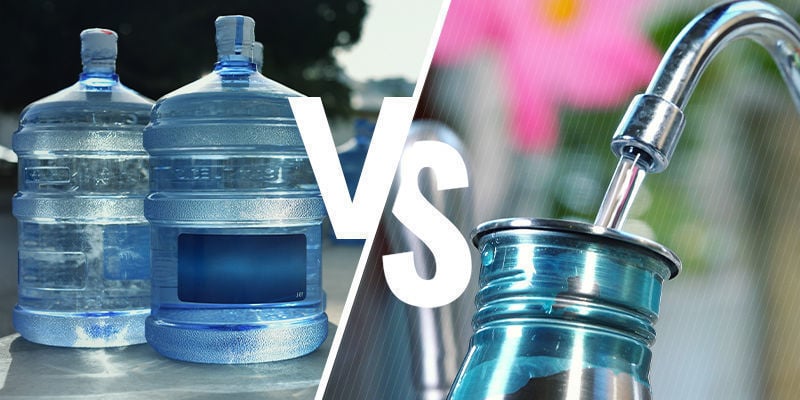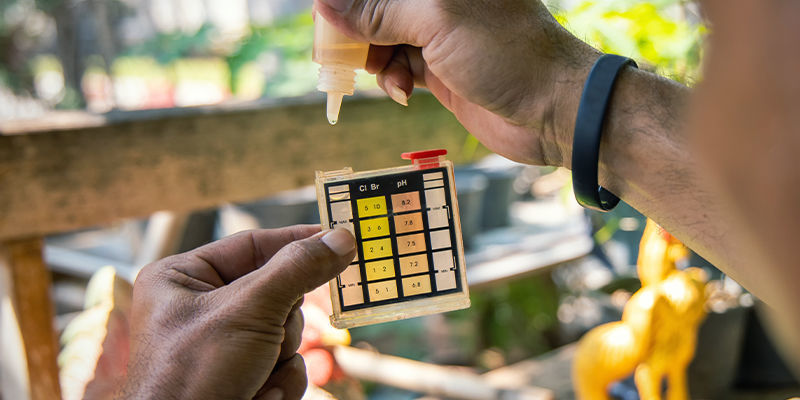
How To Use Reverse Osmosis Water To Grow Weed
When it comes to growing cannabis at home, you don't need to look far for varying, polarising opinions on what you should be doing. One such topic of debate is the use of reverse osmosis water. This practice has garnered plenty of attention, and here we take a look at everything you need to know about using RO water for your weed.
At first glance, it might sound like something from a science fiction movie—but many are using advanced water filtration methods to make the most of their cannabis grow. But how does it work? Or a better question might be, does it actually work? And is it worth it? Below, we delve into everything you need to know about reverse osmosis water, and how it can potentially benefit your cannabis plants.
What is reverse osmosis water?

So, what is reverse osmosis water, and how does it differ from regular water? Essentially, “RO” water is that which has undergone a high-pressure filtration process removing around 95–99% of its dissolved salts and impurities. This is achieved by forcing water through a semipermeable membrane that acts as a filter. The significant pressure exerted allows pure water to drain through while leaving minerals, salts, and contaminants on the other side of the membrane. However, RO can be a very costly method, as it takes up to an estimated six litres of water to produce just one litre of reverse osmosis water.
The benefits of reverse osmosis for cannabis
Without the presence of impurities, contaminants, and salts, reverse osmosis water is arguably the purest kind you can provide to your cannabis plants. Although, the goal of using RO water to grow weed isn’t to deprive your plants of nutrients, but to fine-tune them. By starting with a pure water sample, growers can add nutrients such as magnesium, calcium, and NPK with unprecedented precision, allowing for optimal feeding, and thus optimal development.
On the other hand, water that hasn’t been purified—such as regular city water or tap water—will contain a different mineral profile, meaning growers need to test the water quality in order to accurately add nutrients so they’re not overfeeding their plants.
Benefits of RO for cannabis at a glance:
- Allows growers to dial in nutrients with great accuracy
- Eliminates most impurities, contaminants, and salts
- Can be used by home growers
How reverse osmosis systems work

As we've touched upon, the process of creating reverse osmosis water is achieved by forcing the sample through a membrane, leaving impurities behind. Typically, these membranes consist of three layers: a polyester web, a microporous polysulfone layer, and a polyamide barrier.
This process is performed on both a large scale—such as in the production of clean drinking water—and a small scale, in the home. Indeed, some people have RO configurations that work with their current water system.
For example, those living in areas where tap water is contaminated with high fluoride or chlorine levels more than likely already have reverse osmosis filters fitted to their home water filtration system.
Cannabis growing: how to use reverse osmosis water

Once left with a purified water sample, growers have the opportunity to adjust the nutrient content to their—or rather, their plants’—liking, all without the risk of contaminants and unknown levels of minerals.
While this provides the freedom to create “designer” water for your plants, some growers are against the use of reverse osmosis water, as it takes out the “natural” aspect of cultivating cannabis. So, depending on how you feel about this sentiment, you may or may not choose to use RO water in your grow. Granted, it may appeal more to growers with a lot of experience who are looking to really maximise their plants’ potential.
Buying reverse osmosis water vs building your own filter system

You don't need a huge industrial machine to create your own reverse osmosis water. As mentioned, there are home units available, and for a somewhat reasonable price. However, you can actually build your own filtration system too!
In contrast, it's entirely possible to purchase bottled reverse osmosis water that you can readily use for your plants. Let's take a closer look at the pros and cons of each option.
Buying RO water
A quick search online will show you that reverse osmosis water is readily available. However, although not hard to source, the price may put off some prospective buyers. Because of the filtration method used, the markup on reverse osmosis water can be high. Although it does provide growers with the ability to add their own nutrients, this freedom comes at a price.
But buying bottled reverse osmosis water is a viable option for those growing just a plant or two, or those unwilling to install a system of their own. Whether or not it becomes a significant expense depends chiefly on the scale and nature of your grow (soil or hydro).
Building your own reverse osmosis filter system
If you're unwilling to buy bottled RO water or a home filtration system (as these aren’t exactly cheap), you can look to build your own reverse osmosis filter system at home.
It's possible to buy all of the parts online or in a hardware store and create a system to suit you. With filters available to purchase, it's a relatively easy system to create. The result is a steady stream or reverse osmosis water whenever you need it, making it ideal for those with larger grows.
However, while cheaper than buying a ready-made system outright, the cost of the materials may surprise some. And it takes around 4–6 litres of water to create 1 litre of RO water, which undoubtedly increases usage and subsequent bills. So be sure to first carry out the appropriate research if you're looking to build your own reverse osmosis filter system.
Nutrients and reverse osmosis

As mentioned, the end result of water that has gone through reverse osmosis will be stripped of virtually all minerals and impurities. This also means it’s stripped of necessary nutrients cannabis needs. However, it allows growers to add nutrients in the desired amounts, without high levels of fluoride or chlorine thwarting the viability of the mix.
In addition to nutrient content, pH level is also regulated through reverse osmosis. Cannabis plants grown in soil respond incredibly well to a consistent pH level of around 6.5; as luck would have it, reverse osmosis water pH settles at approximately 6.0–6.5, making it ideal.
That said, it’s important to measure the pH once you’ve added your nutrients, as this can change the readings significantly.
Watering frequency
As a very general rule, cannabis plants should be watered every 2–3 days. However, with reverse osmosis water, you may want to alternate with regular water if you're adding large amounts of nutrients, as providing too much fertiliser at one time can negatively affect the plant. So err on the side of caution.
How to store reverse osmosis water

Although reverse osmosis water is pure, it's worth noting that it shouldn't be kept longer than two years. But if you're using it regularly for your growing projects, this shouldn't be an issue. When it comes to storage, simply keep it in a cold and dark environment such as a pantry. Keep well away from sunlight, as this can cause algae or fungus growth.
Should you use a reverse osmosis system for cannabis?
So it boils down to this; should you use reverse osmosis water for your cannabis plants? There are two schools of thought; one that sees RO as a shrewd method to eliminate contaminants and fine-tune nutrition for better plant health, and one that baulks at the concept of using “unnatural” methods of filtration.
But with cannabis surviving and thriving for many millennia without fancy filtration methods, novice growers can still produce high-quality yields without using RO. But if you’re an experienced grower looking for more control, this technique may be just what you’re looking for.
-
 3 min
21 March 2021
How To Water Cannabis Plants When You're Not At Home
Whether you're at home or not, you need to make sure your cannabis plants get watered on a regular basis. But how do you ensure this if you're going away for several days or a week? There are quite...
3 min
21 March 2021
How To Water Cannabis Plants When You're Not At Home
Whether you're at home or not, you need to make sure your cannabis plants get watered on a regular basis. But how do you ensure this if you're going away for several days or a week? There are quite...
-
 5 min
27 September 2018
What Is The Best Water For Cannabis Plants?
Nothing can be more important for successful cannabis growing than water quality and the proper watering technique. Learn about the best water for your cannabis plants!
5 min
27 September 2018
What Is The Best Water For Cannabis Plants?
Nothing can be more important for successful cannabis growing than water quality and the proper watering technique. Learn about the best water for your cannabis plants!
-
 4 min
14 August 2018
How Much Water Do Cannabis Plants Need?
Just as with humans, cannabis plants need water to survive and thrive. But too much - or too little - and they die. Finding the right balance is crucial for an abundant harvest.
4 min
14 August 2018
How Much Water Do Cannabis Plants Need?
Just as with humans, cannabis plants need water to survive and thrive. But too much - or too little - and they die. Finding the right balance is crucial for an abundant harvest.
-
 3 min
5 August 2018
Using Coconut Water As Organic Cannabis Fertiliser
Coconut water is an all-natural cannabis growth accelerator for organic and hydroponic growing systems. It boosts clone development, enhances root growth from seeds, and boosts overall plant...
3 min
5 August 2018
Using Coconut Water As Organic Cannabis Fertiliser
Coconut water is an all-natural cannabis growth accelerator for organic and hydroponic growing systems. It boosts clone development, enhances root growth from seeds, and boosts overall plant...





 United States
United States











